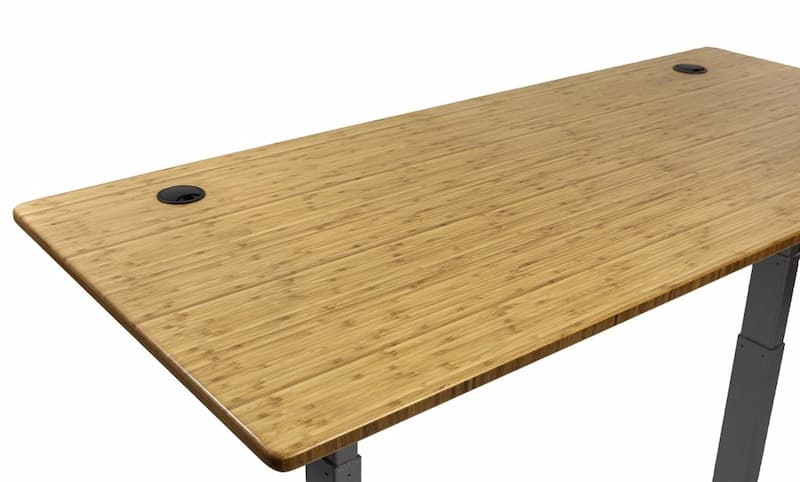Standing Desks and Chronic Illness: Three Conditions Made Lighter
“Chronic” is often mistakenly understood to mean “severe”. Perhaps it’s the way it sounds or that it’s associated with severe-sounding diseases, but to receive a diagnosis of a chronic illness certainly demands severe or extreme changes in one’s life.
Chronic illnesses are often chronic because the causes are still unknown and thus, a cure remains elusive. Treatment often involves managing the symptoms of a disease in order to establish a stability as close to functionality as possible. The most patients can do is to remain vigilant in noting discrepancies in their body and adjusting their regimen of medication, therapy, and lifestyle choices depending on the changing severity of the disease.
One of the hardest things to do on the journey of navigating chronic illness is to realize that there is a choice in terms of how much power to give the disease. It can govern every decision you have to make in your life, limiting this option or preventatively closing that door, almost giving the disease an agency over the future.
Or a patient can take that agency back, by acknowledging that life will look very different, and that your values will change because of it. The next decision can be made from a place of being a person with different values -- of someone who now values rest more than going out with her friends on a Friday night. Or someone who values listening to his body rather than powering through a buffet. Of someone who values saying “no” when they need to, rather than always saying “yes”.
However, a sudden overhaul of values doesn’t happen overnight. And for those seeking a gentle gateway into reclaiming agency, a standing desk is a surprising solution. Below are four chronic illnesses in which a standing desk can serve in an alleviating and perhaps healing way.

With one-touch digital height adjustment, 15-minute assembly, and free shipping, we believe HomeBase is the only standing desk you will ever need.
Build Your Own Standing Desk
Back Pain
Back pain has become the second most common cause of disability in adults in the United States and a common reason for lost work days. The condition is also costly with total costs estimated to be between 100–200 billion dollars annually, two-thirds of which are due to decreased wages and productivity, according to a study by the National Center for Biotechnology Information.
That accounts for “approximately 80% of all Americans [having] low back pain at least once in their lives,” per MedicalNewsToday. The modern workplace has evolved to accommodate our new tools of technology without considering its tax on our bodies made of flesh and bone.
Out of the numerous causes of back pain, including muscle strain, disk complications, and infections, a common cause is poor everyday activity or posture. Working at a standing desk automatically eliminates the majority of culprits, with just a few mentioned here:
- Bending down for long periods
- Straining the neck forward, such as when driving or using a computer
Using a sit-to-stand desk after 4 weeks actually reduced upper back and neck pain by 54% according to a study published by the CDC.
Autoimmune Diseases
Auto-immune diseases are often difficult to diagnose, sometimes taking years to determine the type of disease. One notable symptom of autoimmune diseases such as lupus or rheumatoid arthritis is chronic fatigue.
When feeling tired, exercise is often the last on a person’s list of solutions. But exercise will oftentimes give an additional hour of energy or more if it’s appropriate to one’s level. A standing desk is an easy on-ramp to get started, allowing you the freedom to shift weight, stretch, and change your body’s position periodically throughout the day. Any activity is better than no activity at all, according to Professor Todd M. Manini of the University of Florida in Gainesville. Standing also helps with tackling smaller tasks that are easier to check off, as the very act of standing lends itself to an urgent, more active mental stance toward your work. Per Ranjana Mehta, PhD, of the Department of Environmental and Occupational Health at Texas A&M, “continued use of standing desks was associated with significant improvements in executive function and working memory capabilities."

Our Bamboo standing desk also doubles as a dry-erase surface so you can have impromptu brainstorms or write down reminders.
Shop The Solid Bamboo Standing Desk
Restless Leg Syndrome
People with restless leg syndrome frequently suffer erratic sleep as uncomfortable itchy or needle-like sensations occur in their legs (and sometimes other limbs), usually worse at rest, lying or sitting. Benzodiazepines, a class of sedative medications, are often prescribed to improve sleep but can also cause daytime drowsiness.
Working at a standing desk is a two-fold attack: it eliminates the discomfort of uncomfortable sensations in your legs as your legs are kept active while standing, and standing often lends itself to more energy during the day as opposed to while sitting. Especially with the use of an anti-fatigue mat, the soft cushioning under the soles of your feet allow for better circulation and ease of transition from sitting to standing, while also enabling you to stand for longer periods of time.
According to Dr. James Levine, co-director of the Mayo Clinic and the Arizona State University Obesity Initiative, “The nature of the human body was to be active and moving all day. The body was never designed to be crammed into a chair where all of these cellular mechanisms get switched off.”

Credit: The JAMA Network
Lastly a major challenge that accompanies chronic illness is the reality that it is often a “hidden” condition, where a patient does not necessarily look or seem ill by appearances and therefore, their grievances do not seem valid. Nor do patients always want to be open about their illness for fear of judgment or biased treatment by workplaces. A standing desk is an unassuming way to fight back chronic illness and fight for a thriving sense of well-being -- a boost to anyone, with or without a chronic illness.
For an in-depth look at how a standing desk alleviates narcolepsy, see our blog post here.
Want to build your own standing desk? Check out this link to find the Standing Desk that works for you: Build Your Own Standing Desk




